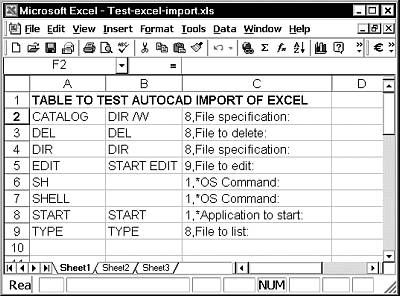If your current CAD job is not what it once was, then it may be time to move on. A job search can be very frustrating if it gets started on the wrong foot! There are steps you can take before, during, and after your search that will make it more effective and less stressful. Lets take a more in-depth look at each of these important categories. Before Your Search Begins
Unless you are looking for your very first job, the reason you are searching for a job is because your current one is losing its appeal. It is critical to put your finger on the exact reason(s) for this. Why, you ask? Well, interviewers are likely to ask you “why are you looking”. If you stumble out an incoherent answer, they will question your commitment, and quite possibly dismiss you as a potential candidate. To prepare yourself, you will need to do an “assessment” of your current position in order to ferret out the cause of your dissatisfaction. The following steps will help you to do this.
1. Objectively describe your job
Write down honest answers to these revealing questions. Is my current compensation appropriate? Do I get along with my coworkers? Does my boss give me challenging tasks? Is there opportunity for advancement? If I stay with this company, where can I be in one, five, or ten years? Using these questions in a personal “brainstorming” session will summon a lot of information out of your sub-conscious mind and into your conscious mind.
2. Decide Whether or Not Your Current Job is Salvageable
This is very much a judgment call on your part. On the positive side, your boss may be glad that you took the time and effort to make him or her aware of your concerns. On the negative side, your boss may disagree with your assessment and see your issues as a reason to start looking for your replacement. Be careful, and make a wise choice. Based on your boss’s management style, you may decide to keep your dissatisfaction private until you have made more progress in your job search.
3. Get Your Resume in Order
The resume is still the most widely used method of communicating professional competencies. It needs to clearly describe your education and your experience. Information describing your current and prior jobs is a must. It lets an employer know whether or not you meet their “general requirements”. Typographical errors are a big “no no” here! Spell and grammar check your resume several times. Have at least one other person review it. Some errors are not caught by spell checkers and grammar checkers. Make sure your resume is legible after being faxed! Fax it to yourself or someone you trust, to be sure it is readable and professional looking.
During Your Search
Consistently read the Sunday “Classified” section of your major metropolitan newspaper! Be sure to look in all of the possible locations. Your job may be under the “general” category or in the “Architecture”, “Engineering”, or “Designers” category. You don’t know for sure unless you look!
Talk to the people in your professional “network”. “Word of mouth” is how many things get communicated. Former coworkers, college professors, and next door neighbors are all potential sources of job leads. If you do not have your own professional network yet, you need to get started. Respond quickly to job ads. If you see it on Sunday morning, your resume should be faxed by Sunday evening. Responding within 24 hours of a lead is a good policy for an effective search. Remember, “the early bird gets the worm”. If you respond first, you will likely be one of the first to be interviewed, and perhaps, one of the first to receive an offer!
Stay active even after you start to receive offers! You may decide to turn down an offer, and it is unwise to loose time because you stopped your search after getting one offer. Keep the pressure on until you have made a final decision. Give serious consideration to every offer you receive. Every job has “tangible” and “intangible” benefits. Learn to recognize them, and you will be making an informed choice.
After Your Search Concludes
Your search is not done after you accept an offer. There are certain “clean up” steps that need to be taken. Remember that you don’t want to “burn your bridges!” Contact every company that made you an offer and thank them. Over the phone is fine, but a quick note sent in the mail is more memorable. That way, if the job you accept turns out to be a total disaster, one of those companies could end up hiring you. After all, they wanted you the first time.
Give the appropriate notice at your current place of employment. Industry standard is two full weeks. This is a common professional courtesy. It gives your (now former) employer a chance to start searching for your replacement. I once gave three full weeks notice. I spent that third week training my replacement. This made my exiting much easier for them to handle. Giving proper notice also makes an employer more receptive to giving you a “letter of recommendation”. If you have done a good job and are leaving on good terms, they should not deny your request for a nice reference letter.
Helpful Resources
There are many sources of good information on the topic of “careers”. Some books that will be helpful…
- Resumes for Dummies
- Cover Letters for Dummies
- Job Interviews for Dummies
All of the above were written by Joyce Lain Kennedy. If you are unsure of the myriad of CAD-related careers, check out a book called “Opportunities in CAD/CAM Careers”.
Two employment newspapers to consider are the “National Business Employment Weekly”, and “Employment Review”. These well-written publications are easy to read and full of good career information.
Conclusion
Looking for, and starting, a new CAD job can be quite challenging. It doesn’t, however, have to be stressful. By being proactive in your job search, you will be more effective and better informed. This is valuable to you, your employer, and the industry as a whole.
BookList
- Resumes for Dummies
- Cover Letters for Dummies
- Job Interviews for Dummies
- Opportunities in CAD/CAM Careers






